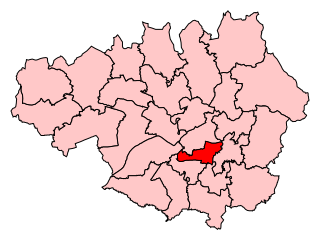Boundary reviews
| Prior to 1832 | Since 1290, the parliamentary county of Oxfordshire, along with all other English counties regardless of size or population, had elected two MPs (knights of the shire) to the House of Commons. The county also included the parliamentary boroughs of Oxford (partly in Berkshire) and New Woodstock both returning two MPs (burgesses) and Banbury (partly in Northamptonshire) which returned one MP (one of only a handful of English boroughs to do so). | |
|---|---|---|
| 1832 | The Reform Act 1832 radically changed the representation of the House of Commons. The county's representation was increased to three MPs, whilst that of New Woodstock was reduced to one MP. | |
| 1885 | Under the Redistribution of Seats Act 1885, [1] the county was divided into three single-member constituencies, namely the Northern or Banbury Division, the Mid or Woodstock Division and the Southern or Henley Division. The boroughs of Banbury and Woodstock were abolished and absorbed into the county divisions which took their names and Oxford had its representation reduced to one MP. |  |
| 1918 | Under the Representation of the People Act 1918, [2] Woodstock was abolished. Its contents were divided between the two other county seats, with western parts, including Witney and Woodstock, being transferred to Banbury, and eastern parts, including Bicester, to Henley. Caversham, to the north of Reading, had been absorbed by the county borough thereof and was now transferred from Henley to the constituency of Reading in Berkshire. The boundaries of Oxford were aligned to those of the county borough. |  |
| 1950 | The representation of the county was unchanged by the Representation of the People Act 1948. [3] The boundaries of Oxford were expanded further to match the earlier expansion of the county borough, primarily into the Henley constituency to include the suburbs of Cowley and Headington. |  |
| 1974 | Under the Second Periodic Review of Westminster Constituencies, [4] representation was increased back up to 4 MPs with the creation of the constituency of Mid Oxfordshire (formally known as Mid-Oxon). This was formed largely from the constituency of Banbury, incorporating the Urban and Rural Districts of Witney as well as the village of Kidlington, to the north of Oxford. It also included rural areas to the south of Bicester and the east of Oxford, transferred from Henley. Bicester and areas to the north were transferred from Henley to Banbury. |  |
| 1983 | The Third Periodic Review [5] reflected the changes to Oxfordshire resulting from the Local Government Act 1972 and saw the county's representation increase from 4 to 6 MPs combined with major boundary changes. The bulk of the area comprising the constituency of Abingdon in Berkshire had been moved to Oxfordshire, with the majority of its contents, including Wantage, Wallingford, Didcot and Faringdon, being included in the new seat of Wantage. The town of Abingdon-on-Thames itself, together with areas to the west of Oxford, was included in the new constituency of Oxford West and Abingdon, along with western parts of the abolished constituency of Oxford, including the city centre. Eastern parts of Oxford (comprising the majority thereof) formed the new constituency of Oxford East, which also included further suburban areas transferred from Henley and Mid-Oxon. Mid-Oxon was abolished and largely replaced by the new constituency of Witney, which included Witney and Kidlington. Eastern, rural, areas were transferred to Banbury (parts in Cherwell District) and Henley (parts in South Oxfordshire District). Woodstock, Chipping Norton and surrounding rural areas were transferred from Banbury and added to Witney. |  |
| 1997 | The Fourth Review [6] resulted in relatively few changes. They including the transfer of Kidlington from Witney to Oxford West and Abingdon, which in turn lost the South ward of the City of Oxford to Oxford East. Witney gained the two remaining wards of the West Oxfordshire District which had been included in Banbury in the previous review. |  |
| 2010 | At the Fifth Review [7] the Boundary Commission for England retained Oxfordshire's 6 constituencies, with minor changes to realign constituency boundaries with those of current local government wards, and to reduce the electoral disparity between constituencies. They included the transfer of Oxford city centre from Oxford West and Abingdon to Oxford East. |  |
| 2024 | For the 2023 Periodic Review of Westminster constituencies, which redrew the constituency map ahead of the 2024 United Kingdom general election, the Boundary Commission for England increased the number of seats in Oxfordshire from six to seven, due to the electorates of all six existing constituencies being above the maximum allowed quota. This resulted in the formation of the new constituency of Bicester and Woodstock, incorporating the town of Bicester, transferred from Banbury, Kidlington from Oxford West and Abingdon, and Woodstock from Witney. To partly compensate for their losses, Oxford city centre was moved back from Oxford East to Oxford West and Abingdon, Chipping Norton was transferred from Witney to Banbury and Faringdon from Wantage (renamed Didcot and Wantage) to Witney. Other small changes to align with new ward boundaries. Henley renamed Henley and Thame. [8] [9] |  |







